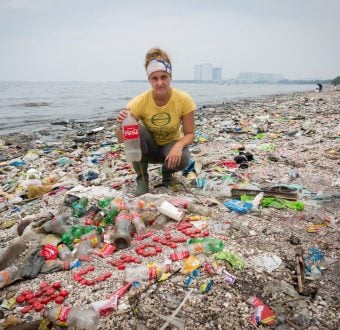Like many others I recently received an email from President Obama inviting me to enter a contest to meet the President and share an inspirational story about how I got involved in social change. I didnt take me long to recall an incident long ago when I was in college and working part-time at a factory. I stepped outside for a break and walked into an invisible toxic cloud. It was a process that involved chlorine gas. As I gasped for air, workers wearing protective gear saw me and quickly walked me to safety. That was my first lesson in workplace safety.
Today many U.S. cities face much greater toxic hazards. According to the chemical plants own reports to the EPA, 466 plants each pose a catastrophic hazard to 100,000 or more people over 80 plants each put 1 million or more at risk. Many of these plants have 90 ton rail cars of deadly chlorine gas on site.
Since he was elected to the U.S. Senate, Barack Obama has championed policies to prevent chemical plant disasters. Nine years ago on March 30th Obama introduced a bill that would have required chemical plants to switch to safer available chemicals or processes. On the Senate floor he warned, these plants are stationary weapons of mass destruction spread all across the country.
The chemical industry lobby opposed his legislation but he didnt back down saying, We cannot allow chemical industry lobbyists to dictate the terms of this debate.
And when Obama issued his 2008 campaign platform, Change We Can Believe In, it included a promise to secure our chemical plants by setting a clear set of federal regulations that all plants must follow, including improving barriers, containment, mitigation and safety training, and wherever possible, using safer technology, such as less toxic chemicals.
Although legislation passed the House in 2009 with key prevention elements of President Obamas policy in it, the legislation died in the Senate. Three years later on April 17, 2013 a terrible but preventable tragedy occurred in West, Texas when a fertilizer depot exploded killing 15 people — mostly first responders. At their memorial service President Obama said, we’ll be there even after the cameras leave and after the attention turns elsewhere
On August 1, 2013, the President made good on his words by issuing an executive directing federal agencies to modernize their safety rules. But almost two years after the West, Texas disaster were still waiting for new rules. What there have been are lots of hearings and comment periods. In October the EPA received more than 110,000 comments from the public urging the EPA to quickly issue new safety rules to prevent future disasters.
But something else has been happening since the West, Texas disaster. There have been over 350 additional chemical accidents, some of which also claimed lives. Late last year the White House posted plans for a proposed rule by the EPA but not until sometime in September. So lets do the math. If it takes 12 to 18 months to finalize new rules, why wait until this coming September to start a process when your term ends in 2016?
On March 19th 146 concerned organizations and leaders sent the President a letter about this delay. The letter signed by a diverse coalition of environmental groups, unions, environmental justice groups, public health groups and security experts warned the President that his Administration is running out of time to make a real difference on this critical issueTo ensure that new rules do take effect, they must be finalized well in advance of the end of your administrations term in office.
This could be the last chance in a generation to implement prevention policies that will save countless lives. Safer cost-effective chemicals and processes are widely available. Since 2001, hundreds of chemical facilities, including Clorox have switched, proving that they can eliminate these risks to millions of people. A survey of converted plants found that 87 percent converted for $1 million or less. Yet today a few hundred chemical plants together put more than 100 million Americans at risk of death or injury by accidents, natural disasters or terrorism.
The EPA has clear authority to require chemical plants to switch to safer processes. And California has already drafted promising regulations following a 2010 refinery disaster in Richmond, California which the EPA could incorporate in federal rules.
Moreover, this should not be a partisan issue. Three years ago, before West, Texas, former Bush EPA administrator, Governor Christine Todd Whitman urged the Obama EPA to use authorities you can apply to reduce these hazards before a tragedy of historic proportions occurs. She proposed similar regulations in 2002 following the 9/11 attacks but they were scuttled by the Bush White House.
Prioritizing these rules is good policy and good politics, backed by cost-effective solutions and a majority of likely voters. But if the President lets the clock run out, who will the families of future disasters blame for failing to prevent it? In his book, The Audacity of Hope, Obama shared his vision for the future, leaving behind a legacy that will make our childrens lives more hopeful than our own. — You can help by sending the President a reminder today by clicking here



